(solved) Assignment on SPSS Lab
Added on 2020-10-05
30 Pages4290 Words173 Views
SPSS LAB REPORT
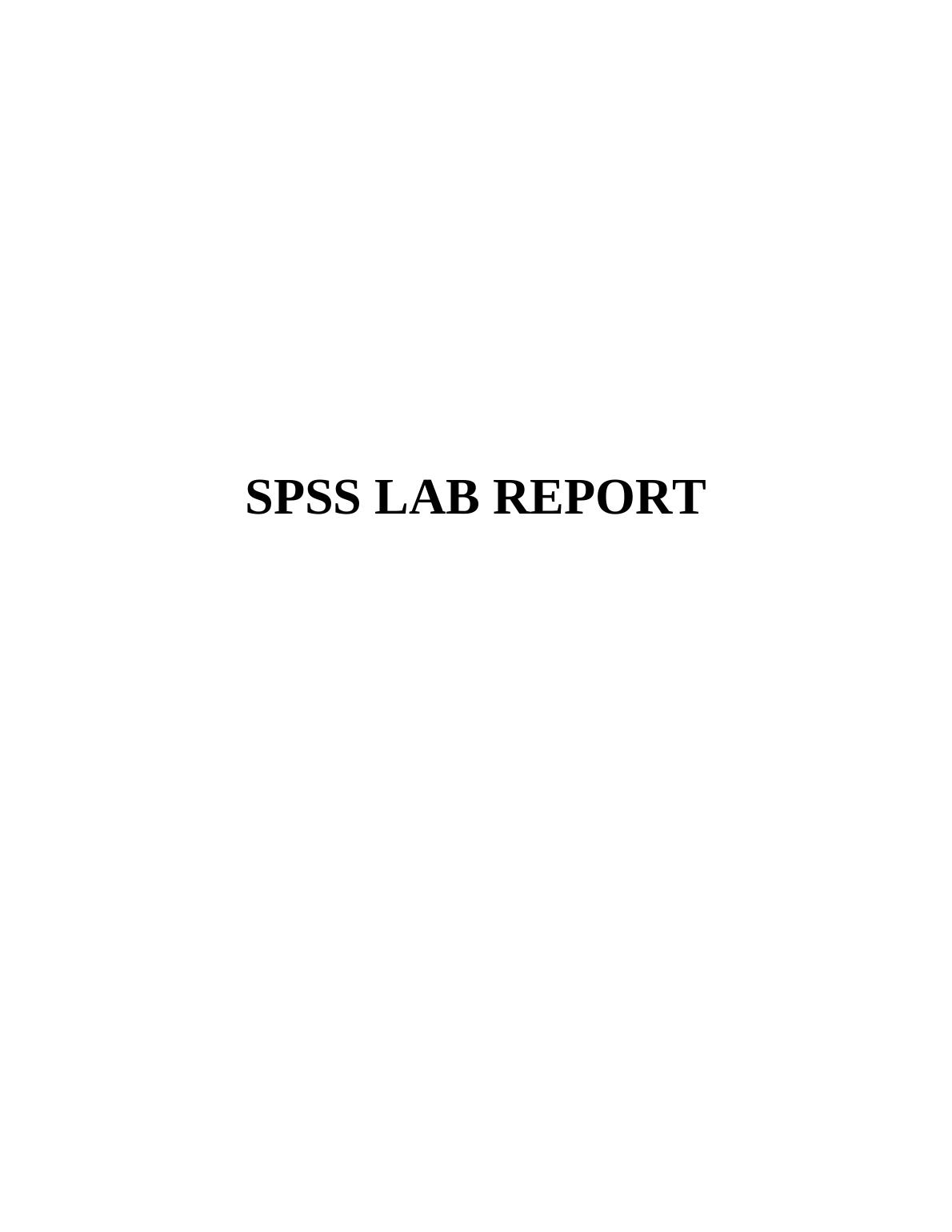
ABSTRACTCognitive dissonance theory is referred as tendency for individuals for seekingconsistency between different beliefs and opinions. This study will help in process of decisionmaking and on basis of selective exposure of information. The participants were recruited fromAustralian university from 1st year psychology with accomplished from course credit. Theoutcome has been evaluated with statistical tool SPSS on responses of situation. It has notconsidered various factors which are creating impact on behaviour such as chemical imbalancesand biological structure. This would directly lead to human behaviour with various people foraccounting each individual in separate aspect.
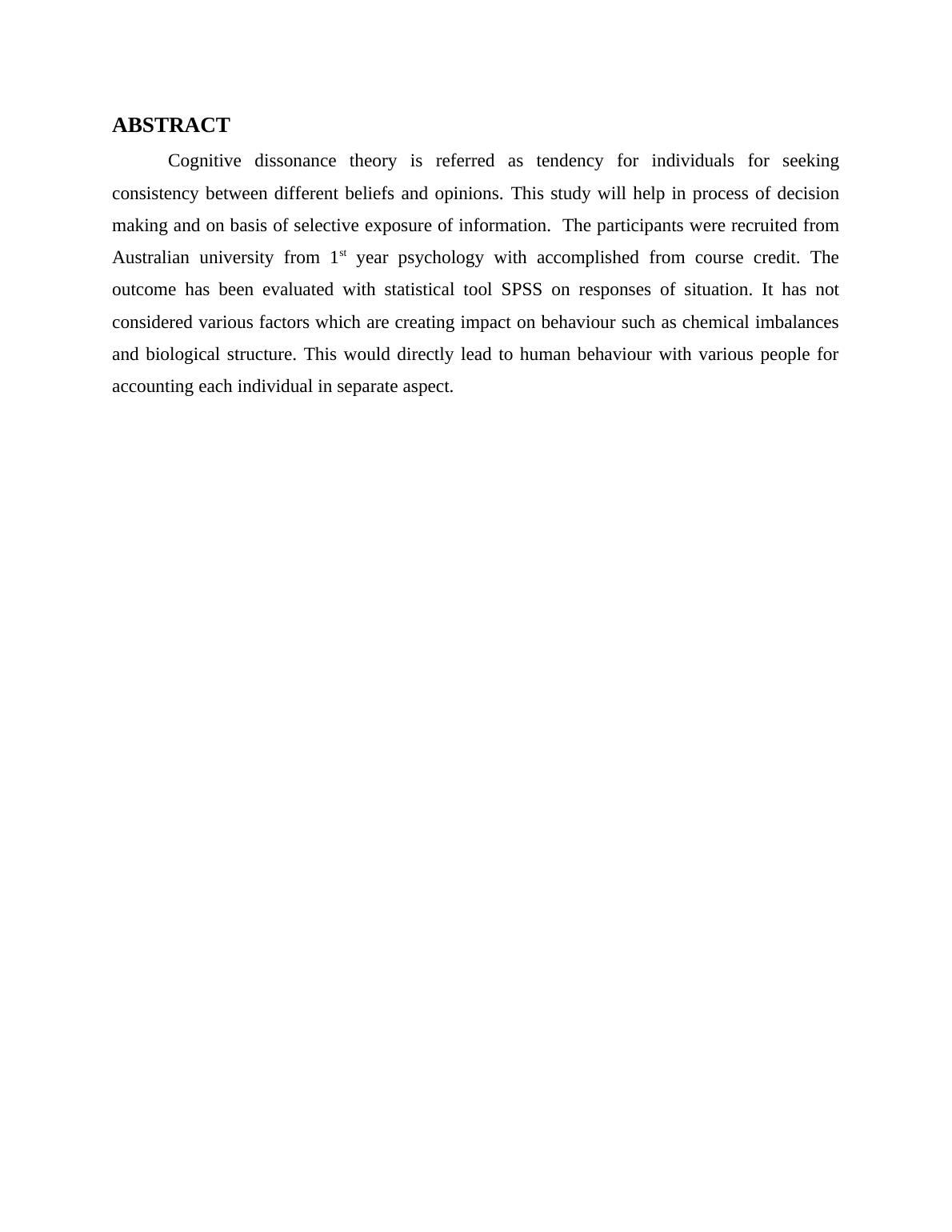
TABLE OF CONTENTSABSTRACT.....................................................................................................................................2Introduction.................................................................................................................................4Literature review.........................................................................................................................4Justification of study...................................................................................................................5Hypotheses Statement.................................................................................................................5METHOD 300.................................................................................................................................5Participants..................................................................................................................................5.....................................................................................................................................................6Design.........................................................................................................................................6Materials......................................................................................................................................6Procedure....................................................................................................................................7RESULTS........................................................................................................................................8DISCUSSION................................................................................................................................17REFERENCES..............................................................................................................................19APPENDICES...............................................................................................................................20
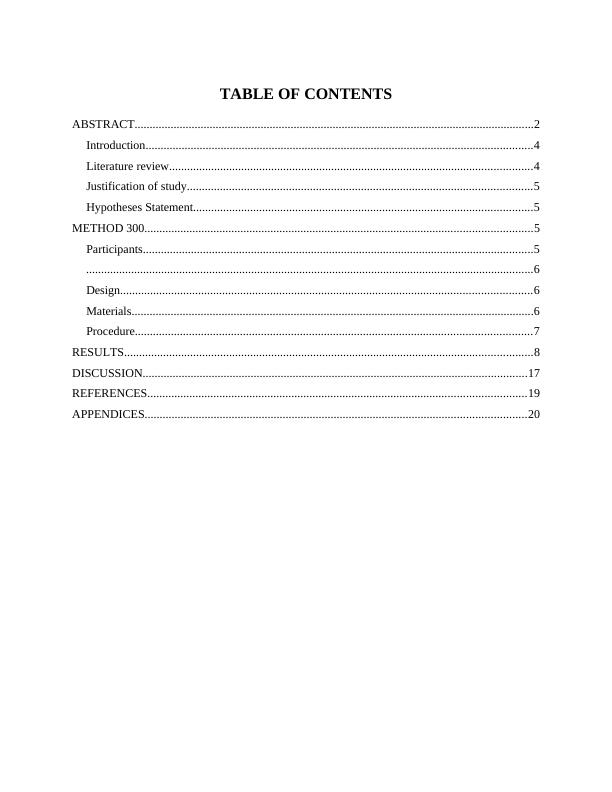
Topic: To assist theory of cognitive dissonance with context of attitude towards legaldrinking age.IntroductionCognitive dissonance is replicated as situation which consist of conflicting attitude,behaviour along with different belief. Generally, it produces feeling of discomfort which leads tochanges in attitude, behaviour and beliefs for decreasing level of discomfort and to restorebalance as well. For instance, when people drinks (behaviour) and they know that it causesvarious disease (cognition). Then they are referred in cognitive dissonance state (van der Kolk &Kaufmann, 2018).Literature reviewAccording to Festinger's (1957), theory of cognitive dissonance has recommended thatpresence of inner drive for holding behaviour and attitude of all on basis of harmony and toignore dissonance. It is replicated as cognitive consistency's principle as if there is absence ofconsistency among attitude and behaviour then there is requirement of alteration to substitutedissonance. However Rabbie, Brehm & Cohen (1959), changing beliefs and attitude is moreconsistent on basis of action and conflicts.As per views of Hinojosa & et.al. (2017), this cognitive approach helps in depictingpicture to observe inward and to extract that how brain will interpret stimuli. It would behighlighting impact of cognition on behaviour with its significance to people for understandingthe way of brain operations. This dissonance is beneficial for those who doesn't wants to befaithful to their brain and to alter behaviour for better aspect. Thus, it directly highlights thethought process of people. On the contrary, according to Harmon-Jones, Harmon-Jones & Levy(2015), significant factor of human behaviour are dismisses as people who believe in thisapproach that each aspect is boiled down to perform one thing that is process of cognitive. Insimple words, it doesn't consider factors which impact behaviours like individual experience,genes, chemical imbalances and biological structure. It could lead to generalizing behaviours ofhuman which does not suit with various people who accounts every individual in differentaspect. So, it defeats people with unique behaviour and thought process as compared to normaldue to single or more listed factor.According to Chang, Solomon & Westerfield (2016), it is fully based on variouscontrolled experiments with application of scientific methods. As different people has pointed
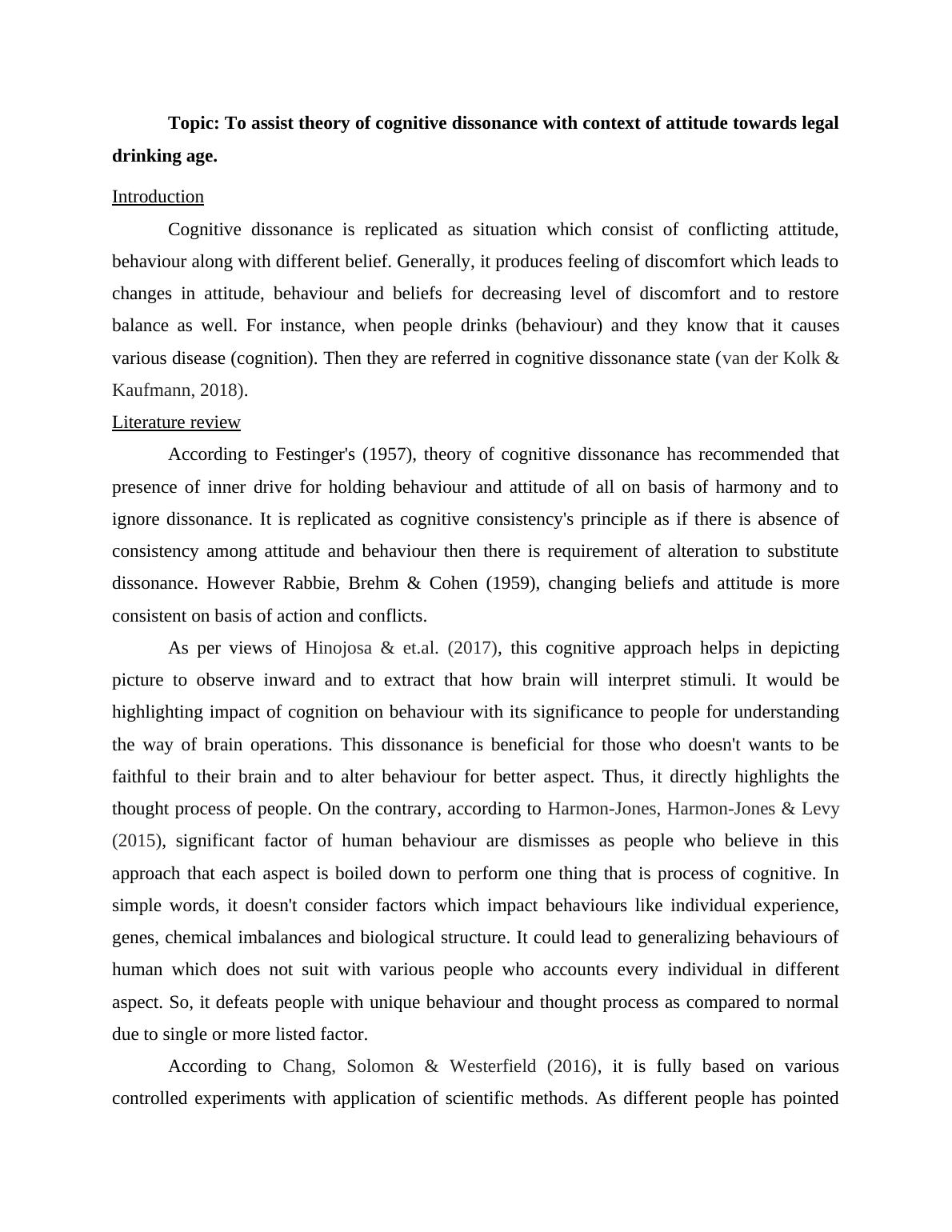
some experiments which might be not valid as they look as with observation of controlledenvironment, they get responses which are closely associated to stimuli which is exposed tosubject. However, they did not get observation about subject with context of real world wherethey are fully exposed to various stimuli for presence of reaction on basis of combinedinformation.Justification of studyThis study related to cognitive dissonance helps in providing implication with alterationsin someone's attitude for creating dissonance on basis of hope with desired outcome. This studywill help in process of decision making and on basis of selective exposure of information. Hypotheses StatementThis study is designed for testing theory of cognitive dissonance for asking participantsfor supporting to raise drinking age by 21 or participants who does not support to increasinglegal drinking age by 21.METHOD 300ParticipantsThe participants were recruited from Australian university from 1st year psychology withaccomplished from course credit.Age: From 18 to 67Participant ageFrequencyPercentValid PercentCumulative PercentValid182421.122.422.4192824.626.248.6201412.313.161.721119.610.372.02265.35.677.62343.53.781.32421.81.983.2251.9.984.12621.81.986.0271.9.986.9281.9.987.93243.53.791.6

341.9.992.5371.9.993.5411.9.994.4431.9.995.3471.9.996.3491.9.997.2521.9.998.1611.9.999.1671.9.9100.0Total10793.9100.0MissingSystem76.1Total114100.0Gender:In this experiment, there were total 48.25 male, 47.4% female and others were 1.8% asits aggregate was 111 but in this system 3 participants gender was missing.DesignIndependent variable: Age, genderDependent variable: Drinking alcoholMaterialsThe participants were asked about support for increasing drinking age to 21 or not. In thissituation, they have set various conditions which were classified in two groups. The group 1 waswho disagree for not supporting to raise drinking age to 21 were assigned one or two conditionon random basis. In the similar aspect, participants of control condition were asked top expresstheir opinion and reason for not changing to 21 years. This group was replicated as experimentalgroup. With context of both condition, all participants were instructed for persuasiveness with
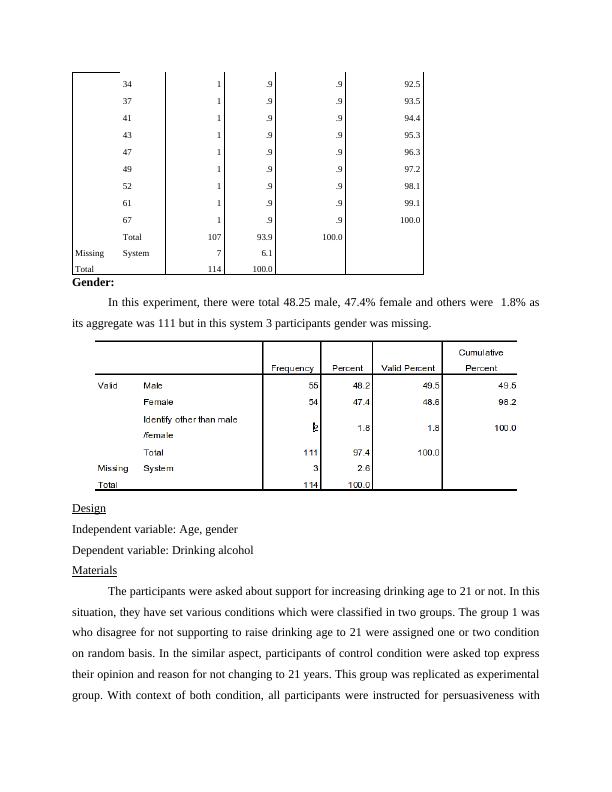
End of preview
Want to access all the pages? Upload your documents or become a member.
Related Documents
Festinger's Theory of Cognitive Dissonancelg...
|10
|2702
|235
Cognitive Dissonancelg...
|7
|2086
|485
General Aggression Modellg...
|18
|768
|99
Assignment | Main Tenets of Positivist Criminologylg...
|7
|1789
|56
Psychopathology: Causes, Symptoms, Treatmentlg...
|21
|1134
|80
The development of schizophrenialg...
|12
|3077
|10
